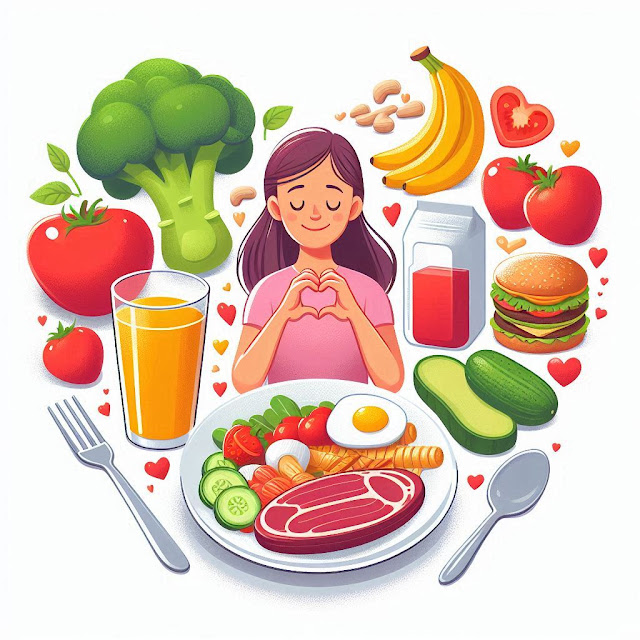Stroke is a leading cause of disability and death worldwide, but the good news is that many cases are preventable. A healthy lifestyle, including a balanced diet, plays a crucial role in reducing the risk of stroke. By incorporating certain foods into your meals and avoiding harmful ones, you can improve your cardiovascular health and reduce stroke risk. Let’s dive into the best foods to include in your diet and why they matter.
1. Leafy Green Vegetables
Leafy greens like spinach, kale, and arugula are rich in folate, vitamin K, and antioxidants. These nutrients help lower blood pressure and improve vascular health, both of which are critical for stroke prevention. Aim to include at least one serving of leafy greens daily in salads, smoothies, or sautéed dishes.
2. Berries
Blueberries, strawberries, and blackberries are loaded with antioxidants called flavonoids. These compounds have anti-inflammatory properties that can help reduce the risk of stroke. A handful of berries as a snack or a topping for yogurt or oatmeal is a delicious way to support heart health.
3. Fatty Fish
Salmon, mackerel, and sardines are excellent sources of omega-3 fatty acids, which help lower bad cholesterol (LDL) and reduce inflammation. Consuming fatty fish twice a week can improve blood circulation and prevent clot formation, two key factors in stroke prevention.
4. Nuts and Seeds
Almonds, walnuts, flaxseeds, and chia seeds are rich in healthy fats, fiber, and magnesium. These nutrients support healthy cholesterol levels and maintain arterial elasticity. Sprinkle seeds on your meals or enjoy a small handful of nuts as a heart-healthy snack.
5. Whole Grains
Foods like oatmeal, quinoa, brown rice, and whole-grain bread are packed with fiber, which helps regulate blood sugar levels and lower cholesterol. High fiber intake is linked to a reduced risk of ischemic stroke, the most common type of stroke.
6. Avocado
Avocado is a powerhouse of monounsaturated fats, potassium, and antioxidants. These nutrients help control blood pressure and reduce inflammation. Use avocado as a spread, add it to salads, or blend it into smoothies for a creamy texture and nutritional boost.
7. Beans and Legumes
Lentils, chickpeas, black beans, and other legumes are excellent sources of plant-based protein, fiber, and potassium. They help lower blood pressure and cholesterol levels. Incorporate them into soups, salads, or as a meat substitute in various recipes.
8. Citrus Fruits
Oranges, grapefruits, and lemons are high in vitamin C and flavonoids. These compounds have been shown to improve blood vessel function and reduce inflammation. Start your day with a glass of freshly squeezed citrus juice or enjoy the fruits as a refreshing snack.
Foods to Avoid or Limit
While focusing on beneficial foods, it’s equally important to limit those that increase stroke risk:
Processed and red meats: High in saturated fats and sodium, they can raise blood pressure and cholesterol.
Sugary foods and beverages: Excess sugar contributes to obesity and diabetes, both risk factors for stroke.
Trans fats: Found in fried and packaged foods, trans fats increase bad cholesterol and inflammation.
Excessive salt: High sodium intake raises blood pressure, a major stroke risk factor. Aim for less than 2,300 milligrams of sodium per day, or even lower if you’re at risk.
Lifestyle Tips for Stroke Prevention
Stay hydrated: Drink plenty of water to maintain proper blood flow.
Exercise regularly: Aim for at least 30 minutes of moderate activity most days.
Manage stress: Practice mindfulness, yoga, or deep breathing exercises.
Quit smoking: Smoking damages blood vessels and significantly increases stroke risk.
Limit alcohol: Excessive drinking can raise blood pressure; stick to moderate consumption.
Conclusion
Preventing stroke is within your reach, and it starts with what’s on your plate. By incorporating these nutritious foods and making healthy lifestyle choices, you can significantly lower your risk of stroke and enhance your overall well-being. Remember, small changes can lead to big health benefits over time.
#StrokePrevention #HealthyEating #HeartHealth #NutritionTips #PreventStroke
#HealthyLifestyle #Superfoods #BrainHealth #WellnessJourney #EatForHealth
#saosiamfood #saosiam

Comments
Post a Comment